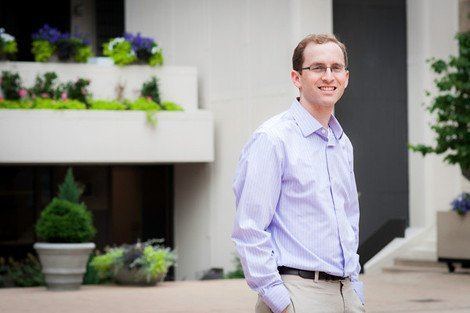July 24, 2013 — With just months remaining before the January 1, 2014 rollout of changes to the Medicaid program that will expand health care coverage to as many as 10-20 million Americans, substantial implementation challenges remain — namely, uncertainty regarding costs and the number of states willing to accept the federal subsidy to expand Medicaid coverage to their citizens.
Benjamin Sommers, assistant professor of health policy and economics at Harvard School of Public Health (HSPH), provided an overview of the latest policy debates and research findings regarding the Medicaid expansion on July 16, part of HSPH’s summertime Hot Topics lecture series.
Implementing the Medicaid expansion “is not going to be smooth sailing,” Sommers said. But, he added, the expanded access for many low-income Americans is “a big step forward in a country that has a long history of health inequity.”
Sommers worked on the law as a senior advisor in the Office of the Assistant Secretary for Planning and Evaluation, in the U.S. Department of Health and Human Services, from 2011-2012.
Under current guidelines, only low-income people in certain categories including children, the elderly, and the disabled are eligible for Medicaid benefits. But the expansion passed as part of the Affordable Care Act (ACA) in 2010 extends eligibility to everyone with family incomes below 133% of the poverty line (approximately $15,000 for a single adult and $30,000 for a family of four). The federal government will pay states 100 percent of new Medicaid recipients’ tabs during the first three years of the Medicaid expansion and 90 percent of those costs in the long run.
Although the expansion was intended to be mandatory nationwide, the Supreme Court ruled last year as part of its decision on the ACA that the federal government could not penalize states for opting not to participate. Sommers expects that roughly half of the states will join the initial rollout, with more eventually opting in.
He believes that the influx of new Medicaid enrollees will not overwhelm the health care system; however, the increased demand will not be distributed equally, he said. The health care workforce will need to be increased in certain geographic areas and in medical specialties such as primary care and general surgery. Hiring more nurse practitioners could help fill the gap in primary care providers, Sommers said. To keep costs down, health systems should make better coordinated care for the elderly, disabled, and others with more complicated health a priority, he said.
Some have pointed to the poor health outcomes of many in the current Medicaid population as proof that the system doesn’t work; however, that may be because people with greater health needs—or potentially more serious health conditions—have been more likely to be eligible and sign up for Medicaid, Sommers said. In addition, work by Sommers and other HSPH researchers has shown that in states that previously expanded Medicaid access on their own, low-income adults used more preventative services, reported improved physical health, and exhibited improved mental health. The researchers also found a small but statistically significant (6%) decline in mortality among this population.
“Overall, the body of work is pretty clear that having insurance matters,” Sommers said.
Photo: Aubrey Calo
